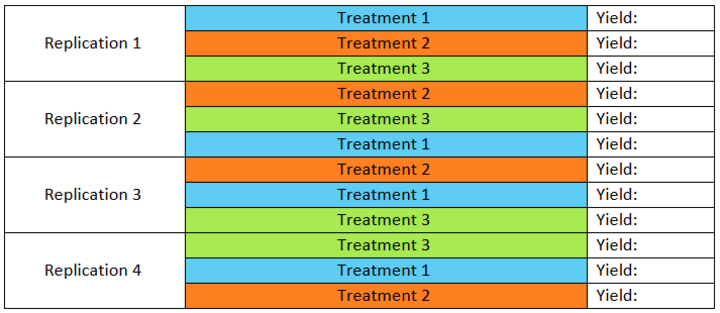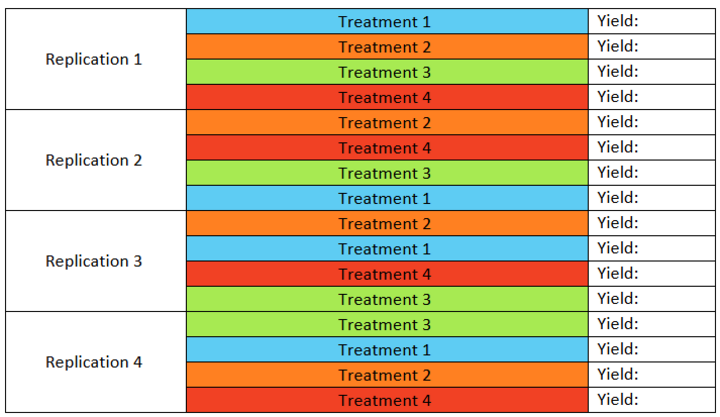Replication and Randomization: The Nebraska On-Farm Research Network (NOFRN) suggests that all projects conducted are both replicated (3+ times) and plots are randomized within the project area. This is to eliminate any bias in the field that may occur (yield gradient, soil characteristics, etc) that would give benefit to one treatment over the other.
2 treatment design (Strip Trial): A 2 treatment design, as shown below, is used to test a product(s) or farming method against a current growing method or alternative solution. This basic design is testing a the product or method's effectiveness against the other product, method, or an 'untreated' plot. Notice the replication (4 plots) and the randomization of plots within each block.

3 treatment design: A 3 treatment design follows many of the same principles as a 2 treatment. However, now we may be testing two different products against an untreated plot or potentially 3 different rates of the product.

4 treatment design: The 4 treatment design continues to follow the same principles and guidelines as the 2,3 treatment protocols. Notice the replications within each block (4 reps; 4 blocks) and the randomization of treatments nested inside each block. This treatment design is great for mutliple rates of the product, multiple fertilizer rates, or testing many seeding rates against one another.

Checkerboard Design: We can also use a checkerboard design to fit treatments into a randomized and replicated format in hopes to better align with field logistics. We can use this design for projects containing 2+ treatments.
